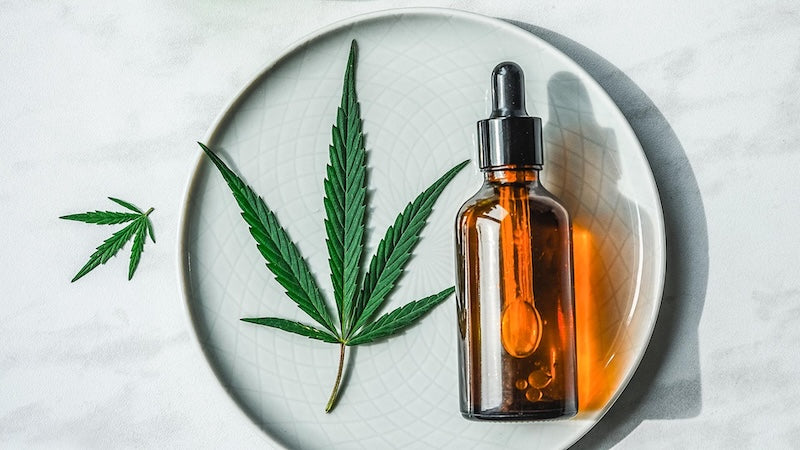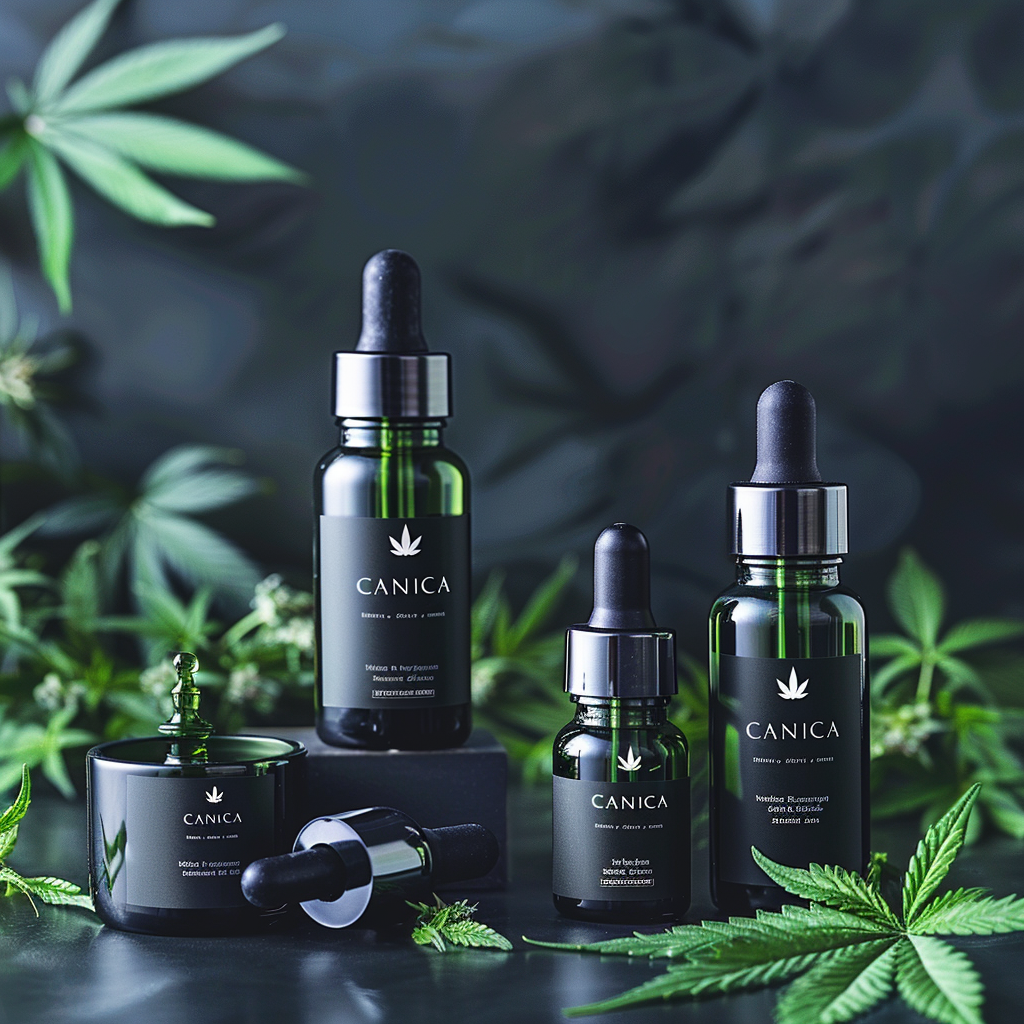CBD guide

-
Introduction
Cannabis is a plant that provides numerous valuable active ingredients. The most important
include phytocannabinoids, flavonoids and terpenes.
Through the growing experience and awareness of the diverse effects of these
Plant for various complaints, the medical-scientific
Research has been intensified considerably, and a system of the body’s own was discovered that enables
active substances contained in cannabis – the so-called endocannabinoid
System. This extremely complex system consists of receptors, the body’s own
Cannabinoids (endocannabinoids) and enzymes responsible for their formation and degradation
are responsible.
The activation of these receptors by endocannabinoids contributes significantly to the
to maintain balance (homeostasis) in the body.
-
Mechanisms of action
Scientific studies have shown that the above-mentioned active ingredients – individually or
in interaction as a phytocomplex – both physiological and pathophysiological
can influence processes in two ways:
- By directly binding to cannabinoid receptors
- Through the so-called entourage effect, in which the binding affinity
endocannabinoids to their receptors and their degradation
is slowed down
What are phytocannabinoids? → Plant molecules.
What are endocannabinoids? → Molecules that our body produces itself.
The receptors responsible for processing phytocannabinoids are called
CB1 and CB2. These receptors help to break down the molecules and trigger processes
through which our body produces its own endocannabinoids – important substances that
contribute significantly to maintaining homeostasis.

Homeostasis – what does it mean?
Homeostasis describes the ability of living organisms to maintain their internal conditions stable
to maintain this even when external circumstances change. This shows how important this
System is also for the immune system.
It has been found that endocannabinoids not only bind to CB1 and CB2 receptors
bind, but also interact with serotonin and vanilloid receptors, which are particularly
play a role in pain regulation.
Here is a brief overview of the effects of phytocannabinoids on various
Body systems:
• Central nervous system: anticonvulsant, appetite stimulant, anti-nausea,
pain-relieving
• Cardiovascular system: vasodilator, can increase pulse rate
• Respiratory system: bronchodilator
• Visual organ: Reduction of intraocular pressure
• Immune system: Strengthening the body’s defenses
-
Interesting fact
The brain stem, which controls vital functions such as heartbeat and breathing, is
almost free of CB1 and CB2 receptors. This explains why there are no lethal
Overdoses due to acute cannabis poisoning. In contrast, these
However, receptors are abundant in the spinal cord and parts of the brain that are responsible for
are responsible for regulating pain and inflammatory processes.
In summary, phytocannabinoids have a variety of positive effects in
body – antioxidant, antihypertensive, anti-inflammatory,
pain-relieving and immune-boosting. The presence of CB1 and CB2 receptors in
different brain regions also indicates important functions in sleep, appetite,
learning processes, emotional states and a possible neuroprotective effect
there.
Of particular interest is the role of this system in controlling the growth of
Tumor cells.
-
What is a phytocomplex?
A phytocomplex refers to the totality of all chemical components of a plant,
which together are responsible for their specific therapeutic effects.
The cannabis plant has a phytocomplex of around 800 different
molecules. The most well-known of these are:
• Cannabinoids: aromatic hydrocarbons with oxygen compounds, among
including CBG, CBC, CBD, THC, CBN, CBL, CBE, CBT• Terpenes: Main components of plant resins that are responsible for taste and fragrance
responsible; chemically aromatic organic hydrocarbons, e.g.
Limonene, Pinene, Myrcene, Caryophyllene, Linalool
• Flavonoids: aromatic polyphenols, known for their antioxidant properties,
which are increasingly receiving attention in nutrition and medicine
-
Advantages and possible areas of application
- Neuroprotective: helps reduce oxidative stress in brain cells
- Effective in chronic inflammatory bowel diseases
- Antibacterial: works against resistant bacteria and can have an antibiotic effect
- Regulates the immune system: Phytocannabinoids directly intervene in immunological processes
- Antiemetic: helps against nausea and vomiting
- Effective for conditions such as high blood pressure, fibromyalgia, muscle cramps
- Vasodilator: can increase the diameter of blood vessels and thus lower blood pressure
- Inhibits the growth of tumor cells
- Anxiety-relieving: has a calming effect on anxiety and stress
- Pain relieving: modulates pain perception
- Blood sugar lowering: reduces and stabilizes the glucose level in the blood
- Promotes bone growth
- Anticonvulsant: can prevent or reduce epileptic seizures
- Anti-inflammatory: works against various forms of inflammation
- Bronchodilator: facilitates breathing by widening the airways
-
Methods for extracting cannabinoids and terpenes
There are different processes to extract cannabinoids and terpenes and for the
Production of oils, creams, capsules or crystals, including:
- Supercritical CO₂ extraction (also used for decaffeinating coffee)
- Subcritical CO₂ extraction
- Extraction with ethanol
- Extraction with hydrocarbons
- Ultrasonic extraction
- Cold pressing under high pressure
- Extraction using sonicators
To produce a high quality CBD oil, it is crucial to pay attention to both the
Attention must be paid to both the starting material and the process. For this reason
Beleaf uses only organic flowers and gentle processes such as
Cold pressing under high pressure produces a stable oil rich in cannabinoids,
terpenes and flavonoids. For the extraction of pure CBD molecules,
Ultrasonic extraction is used, which ensures safe processing and high
Yield guaranteed.
CBD oils are available in different concentrations to suit individual
to meet the needs of different users.
-
Neuropathic pain
There is evidence that the endocannabinoid system plays a crucial role in
regulation of neuropathic pain. It acts through mechanisms that
Influence pain transmission at the neuronal level.
Anxiety disorders
Cannabidiol has promising therapeutic properties in neuropsychiatric
Its effects on the central nervous system have led it to
In recent years it has become an exciting research subject as a possible remedy against anxiety
and stressed.
-
skin system
The density of CB1 and CB2 receptors in the skin, epidermis and dermis is
remarkable. CBD supports the renewal and antioxidant activity of older
skin cells and promotes the formation of new cells. There are also positive results in
Treatment of certain autoimmune diseases. In the co
